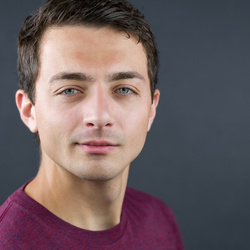Photography has evolved dramatically over the last century. This shift isn't just about technological advancements; it's also about how we perceive what makes a photograph "great."
Coming to you from Alex Kilbee with The Photographic Eye, this thought-provoking video dives into the changing aesthetics of photography, from early, technically imperfect images to the hyper-detailed, vivid photos we see today. Kilbee highlights how early photographers, despite working with significant technical limitations, created images that still resonate with us due to their historical charm and the sheer novelty of capturing a moment in time. These pioneers weren’t obsessed with sharpness or detail; they were captivated by the alchemy of photography itself—a stark contrast to the precision-driven approach many photographers take today.
Kilbee recounts his own journey as a photographer, starting with the awe of simply developing film in a darkroom to later becoming fixated on technical perfection. He discusses how the pictorialist movement, which emerged as a reaction to the industrialization of photography, embraced these technical imperfections and turned them into a new aesthetic. This movement prioritized the artistic quality of an image over its technical accuracy, a concept that Kilbee finds intriguing and relevant even in today's digital age.
As Kilbee explains, this obsession with technical perfection has deep roots. He touches on how photographers like Edward Steichen transitioned from the pictorialist style to what is now known as straight photography—marked by sharp focus, high contrast, and minimal post-processing. This shift, influenced by advances in camera technology and the demands of commercial photography, set the stage for the modern expectation that great photographs must be technically flawless. Yet, Kilbee points out that this focus on perfection has led many photographers to overlook the creative possibilities that come from embracing imperfections.
The video also touches on the resurgence of interest in film photography, driven by a desire to return to a more artisanal approach in an era dominated by digital and AI-driven imagery. Kilbee reflects on his own reluctance to fully embrace AI in photography, preferring the tactile, hands-on nature of film. He encourages viewers to not get hung up on achieving technical perfection but to find joy in the process of creating images, much like Steichen did later in his career when he returned to simpler, more personal photography. Check out the video above for the full rundown from Kilbee.







This is also evident in the trend among "youths" to shoot with 15 year old point and shoot cameras - technically inferior to the camera in their pocket, but somehow more authentic.
Great history show of photography from beginning. For before photography it was paintings and before that drawings on cave walls and even that is a part of photography because we go to great lengths to also photograph even the drawings. Many paintings were done with reflections onto canvas using mirrors and even a lens to focus sharply. We even have use a device even today that reflects light through some mirrors down on a paper for drawing then painting. Years we had the film days of capturing onto glass plates then came film rolls and now digital. All ways done the best it could be done at the time.
But WHY should be the question! Why and What for do we desire to draw, paint, use glass film to rolls of film and even today use a digital device and another digital device called a computer to better the images that are captured. It is/was to remember a certain event or of nature for nature never repeats itself in the exeat way. It is to record time vs believing what someone describes something.
And again why do others buy and hang in a place where they live or in many building full of what is called art. Is it a show of ones skills to record something that many others never saw.
Drawings and panting's on rock was because like north and south Americans never had a written languish but communications were verbal and with drawings in soil.
Photography is a record of time passed by!
1. is an image of a sunrise but also of what nature made in the sand that of what looks like a pirate with a knife in his mouth only captured unknowingly with my camera aperture set at f/22 and not knowing myself what is the correct setting. One can see my foot prints like hovering over the image. Is there old treasure buried there?
2. The entrance to Antelope Canyon in 2017 today wider due to fast running waters. But can you see the horse head and the head of it's rider at the entrance not seen my anybody on thousands of visitors but only with a camera while editing on a landscape view is other faces in the rock wall, go figure what we do not see but a tool helps capture.
3. What about the unseen Milky Way above a runway lit with bright lights, Only ones mind knows it's there and thinking of away to capture the unseen.
4. How many sunrises will have the Milky Way seen but unseen to the human eye
Yes today people will say AI but just using computer editing program some years ago before AI. A camera today is like a microscope revealing things like too small to be seen or invisible to the eyes.